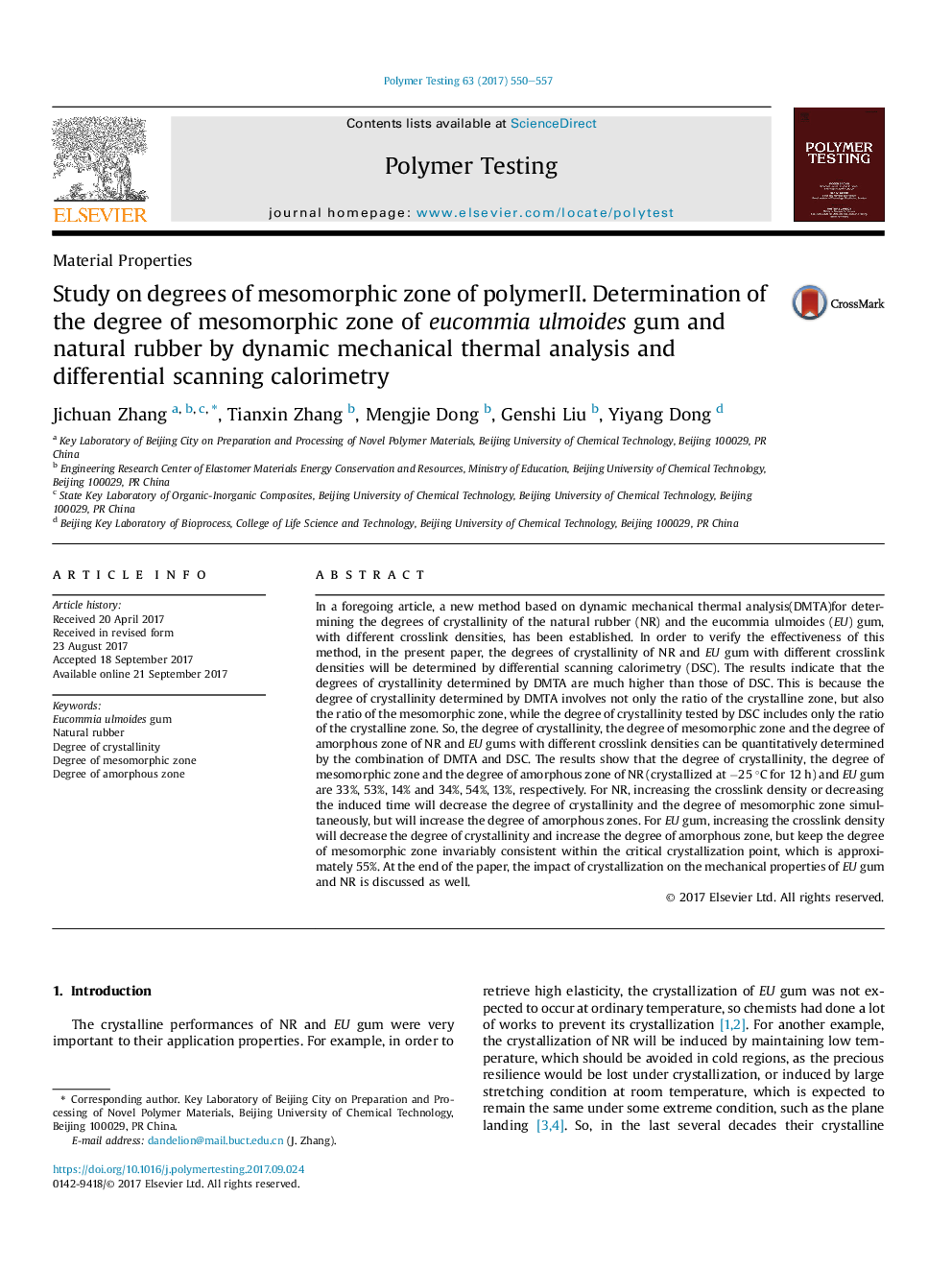| کد مقاله | کد نشریه | سال انتشار | مقاله انگلیسی | نسخه تمام متن |
|---|---|---|---|---|
| 5205292 | 1502927 | 2017 | 8 صفحه PDF | دانلود رایگان |

In a foregoing article, a new method based on dynamic mechanical thermal analysis(DMTA)for determining the degrees of crystallinity of the natural rubber (NR) and the eucommia ulmoides (EU) gum, with different crosslink densities, has been established. In order to verify the effectiveness of this method, in the present paper, the degrees of crystallinity of NR and EU gum with different crosslink densities will be determined by differential scanning calorimetry (DSC). The results indicate that the degrees of crystallinity determined by DMTA are much higher than those of DSC. This is because the degree of crystallinity determined by DMTA involves not only the ratio of the crystalline zone, but also the ratio of the mesomorphic zone, while the degree of crystallinity tested by DSC includes only the ratio of the crystalline zone. So, the degree of crystallinity, the degree of mesomorphic zone and the degree of amorphous zone of NR and EU gums with different crosslink densities can be quantitatively determined by the combination of DMTA and DSC. The results show that the degree of crystallinity, the degree of mesomorphic zone and the degree of amorphous zone of NR (crystallized at â25 °C for 12 h) and EU gum are 33%, 53%, 14% and 34%, 54%, 13%, respectively. For NR, increasing the crosslink density or decreasing the induced time will decrease the degree of crystallinity and the degree of mesomorphic zone simultaneously, but will increase the degree of amorphous zones. For EU gum, increasing the crosslink density will decrease the degree of crystallinity and increase the degree of amorphous zone, but keep the degree of mesomorphic zone invariably consistent within the critical crystallization point, which is approximately 55%. At the end of the paper, the impact of crystallization on the mechanical properties of EU gum and NR is discussed as well.
The number of free chain segments of the amorphous zone in NR and EU gum, tested through DMTA, can be used to calculate their degree of crystallinity, which involves not only the ratio of the crystalline zone, but also the ratio of the mesomorphic zone. So, the degree of crystallinity determined by DMTA is much larger than that of DSC. As a result, the degree of crystallinity, the degree of mesomorphic zone and the degree of amorphous zone of NR and EU gums can be quantitatively determined by DMTA and DSC, which are 33%, 53%, 14% and 34%, 54%, 13%, respectively.292
Journal: Polymer Testing - Volume 63, October 2017, Pages 550-557